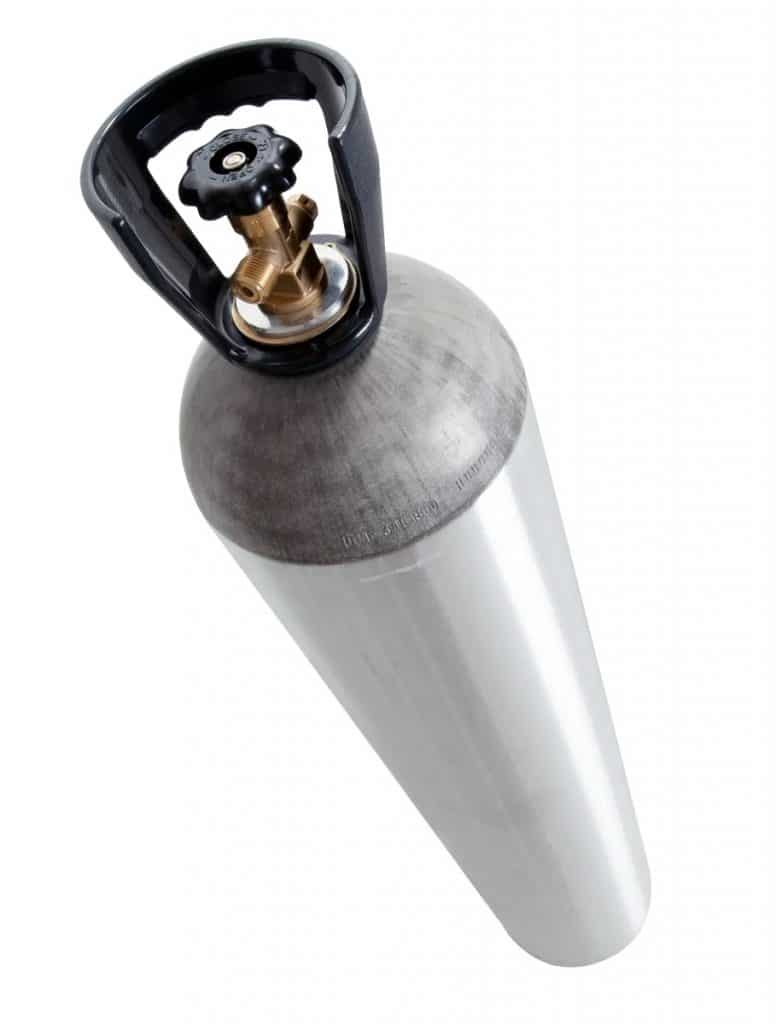If you grow plants indoors, you know how important grow room climate control is. A commonly overlooked aspect of grow room climate control is the grow area’s carbon dioxide (CO2) level. Taking control of the amount of CO2 available to your plants can significantly impact growth. Adding CO2 to grow rooms can increase growth speed and improve plant quality. However, adding too much CO2 can kill crops or cause safety hazards. Balancing carbon dioxide (CO2) levels in hydroponics is a common challenge, but with the right tools, it can be simple.
So, how do you strike the right balance of CO2 for grow rooms? Below is a step-by-step guide on CO2 grow room setup, available systems, and their best-use applications.
Using CO2 in Grow Rooms and Grow Tents
Adding CO2 to grow rooms increases the rate of photosynthesis and promotes plant growth. Let’s take a minute to understand why CO2 is so influential in the growing process.
Without any carbon dioxide at all, plants can’t grow. Plants need CO2 (along with sunlight and water) for photosynthesis. This vital process produces carbohydrates for energy (to fuel plant growth). The more CO2 available, the more efficiently plants can convert light, CO2, and water into food. In a grow room or grow tent, plants are tightly spaced and compete for light. That is why it is vital to maintain high CO2 levels to ensure your plants have what they need to grow.
Typically, grow room CO2 is provided in a few different ways, including the following options:
- CO2 tanks
- CO2 bags
- CO2 pads
- CO2 burner/generator
Along with these CO2 options for grow tents and grow rooms, growers should be aware of a few pieces of related equipment:
- CO2 sensors monitor ppm in the air to prevent the buildup of harmful gases
- CO2 controllers can automate the addition of CO2 when you use a generator
We will explain the various CO2 grow room applications in more detail later. Before we do, let’s take a minute to understand why CO2 is so essential for indoor growing.
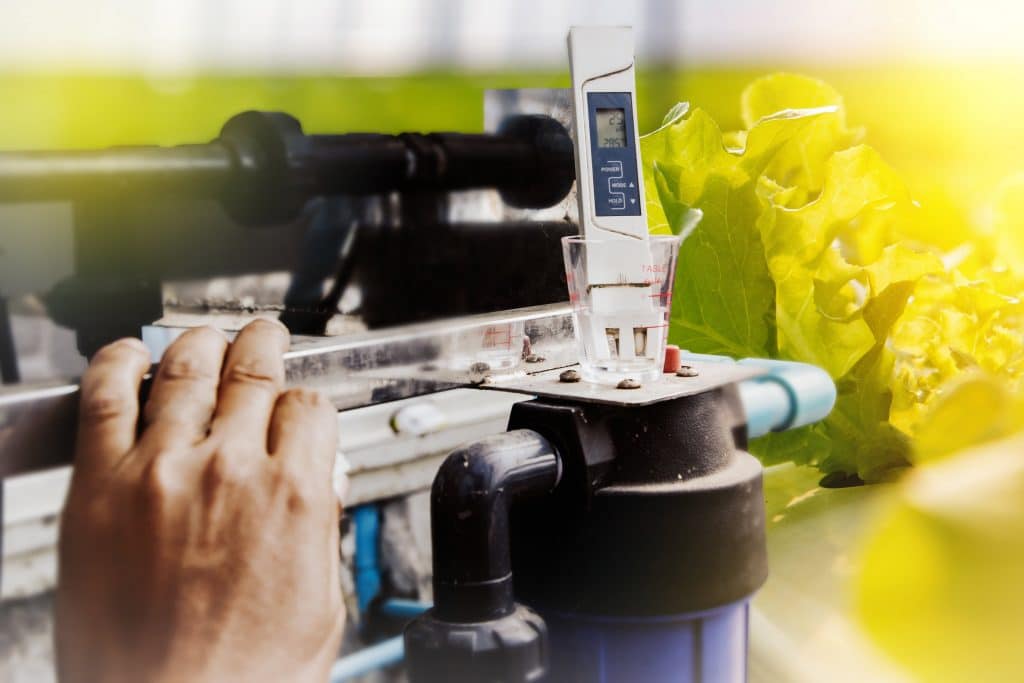
Why is CO2 important for indoor growing?
CO2 devices are essential for indoor growers looking to maximize their plants’ health and productivity. CO2 is a gas that is naturally present in the air. The amount of CO2 in the atmosphere at sea level is usually 350-430 PPM (parts per million). But when you are growing plants indoors, plants consume the amount of CO2 quite quickly if there is no air exchange and new air enters the grow environment. You will need to manage CO2 levels for optimal plant growth. Learn the benefits of using a grow room CO2 system below.
Adding CO2 Increases Yields
If left unmanaged, CO2 levels can constantly fluctuate, and plants need a stable level of CO2 for photosynthesis. Studies show that increasing the CO2 levels in grow rooms can significantly increase yields by up to 40%. CO2 systems for grow rooms help maintain consistent CO2 levels, which can lead to increased growth.
Adding CO2 Accelerates Growth
The air typically contains around 400 parts per million (ppm) of CO2 in nature. However, indoors, air often has lower CO2 levels. So, supplementing CO2 can increase the rate of photosynthesis and lead to faster growth rates.
Keep reading to learn more about when you should add CO2 to your grow room or grow tent.
When to Use CO2 in a Grow Room or Grow Tent
One of the most common questions growers ask is when to introduce CO2 to their grow room—meaning when during the growth cycle should you supplement CO2?
In general, CO2 is only needed when the plants are actively growing. Typically, CO2 should be used during the vegetative stage and turned off during the flowering stage.
However, there are some cases where CO2 may be needed throughout the entire plant lifecycle. For example, plants may require CO2 at all growth stages if grown under high-intensity lighting systems such as HID and CMH. Understanding how to choose the best grow lights for your needs is essential to managing CO2.
Grow Room CO2 Recommendations by Plant Lifecycle Stage
Increasing CO2 in grow rooms can accelerate plant growth rates. However, it can have a detrimental effect on plants if the levels are not adequately maintained for each lifecycle phase.
Some signs of too much CO2 in plants are dormancy and death. If plants stop growing, fruiting, or flowering, these are all effects of too much CO2 in a grow room. Monitoring your CO2 levels ensures that your plants remain healthy and produce bountiful harvests.
Here are the best ways of adding CO2 to the different stages of a plant’s lifecycle.
Propagation
CO2 is especially important for plant propagation, whether you are using clones or seeds. Some seedlings grow best in a CO2-enriched environment. The CO2 level should be between 1,000 and 1,500 ppm for seedlings and clones. If it exceeds 1500 ppm, seedlings can experience CO2 stress, stunt growth, pale and spindly, or die. These are all signs of too much CO2 in plants during the seedling stage. To ensure optimal germination, CO2 levels must be carefully monitored for seedlings to thrive in a grow room CO2 system.
Adding CO2 to the clone propagation process leads to faster rooting, higher strike rates, and less leaf yellowing.
Vegetative
CO2 enrichment is typically most effective during the vegetative growth stage when plants actively grow and produce new leaves and stems. The CO2 level should be between 1,500-2,000 ppm for vegetative growth.
Flowering
Adding CO2 during flowering can boost flower production and increase flower size. The CO2 level should be between 2,000-2,500 ppm. Stunted growth and leaf burn are also signs of too much CO2 in plants.
By balancing the proper levels of CO2, hydroponic growers can help their plants produce bigger, healthier flowers. Any amount of CO2 supplementation beyond 400 ppm is beneficial.
How to Setup a CO2 System in a Grow Room
When adding CO2 for grow rooms, you will need to consider the square footage of the growing area to decide on the best system to use. The area’s size will determine the best way of adding CO2 to your grow tent or grow room.
Learn how to make CO2 for plants in four ways, and the pros and cons of each grow room CO2 application below.
CO2 Tanks in Grow Rooms
CO2 tanks are the most common grow room CO2 system. Tanks provide compressed CO2 that releases as needed. CO2 tanks for indoor growing come in various sizes, and the size you need will depend on the grow room’s size and the number of plants you’re growing. On average, a 50-100 pound tank is optimal for most hydroponics systems.
Pros of CO2 Tanks in Grow Rooms:
- Fillable to the user’s preference for pressure and mixture
- Allows more precise CO2 ppm measurements
- Lightweight, reusable, and adjustable with different fittings
- Automated by a CO2 controller
Cons of CO2 Tanks in Grow Rooms:
- Requires refilling every few months
- Costly for smaller growing systems
CO2 tanks are best applied to large-scale hydroponics systems, cultivation facilities, and vertical farms.
CO2 Bags in Grow Rooms
Another option for providing CO2 in indoor gardening is with CO2 bags. A CO2 bag is a vented bag that contains mycelium fungi. The mycelial mass produces CO2, and the microporous breather patch releases CO2 continually for at least six months. These CO2 bags can raise the CO2 level by 500 ppm above ambient air levels. The bag should be placed in a well-ventilated area to prevent CO2 buildup.
Pros of Using CO2 Bags for Grow Rooms:
- Great for adding supplemental CO2 to an area
- Affordable alternative grow room CO2 system
- Lasts up to six months
Cons of Using CO2 Bags for Grow Rooms:
- Cannot be automated by a CO2 controller (can be monitored by CO2 sensors)
- Requires re-purchasing every few months
CO2 bags are best for home growers or small-scale hydroponics systems. They come in different sizes based on the area they are designed to cover:
You will also need to decide between regular or self-activated CO2 bags.
H3 CO2 Pads for Grow Rooms
Another option for growers who need CO2 supplementation for shorter periods (1-2 weeks) is CO2 pads, which use carbons and acids to absorb water in the air and release CO2. It’s recommended that indoor growers use 1-2 pads for every 200-400 cubic feet.
- 4×4 grow tent – 1 CO2 pad
- 5×5 grow tent – 2 CO2 pads
CO2 pads are also used by commercial and large-scale indoor growers for temporary supplementation when grow room CO2 systems have planned or unplanned outages.
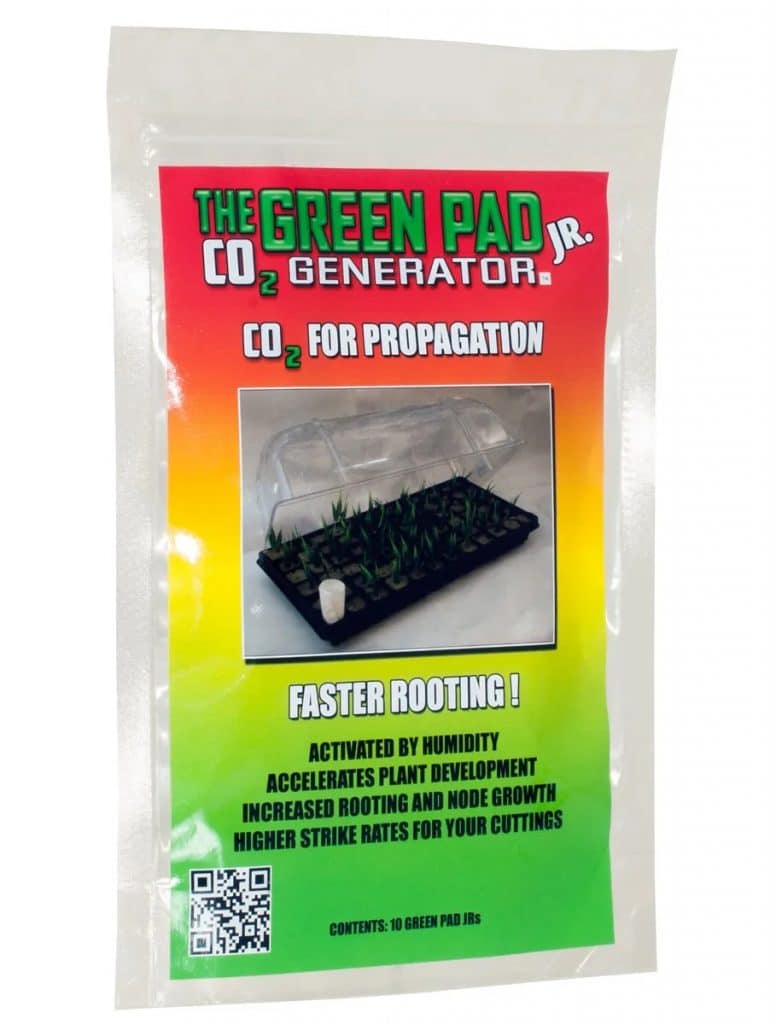
Pros of CO2 Pads for Grow Rooms
- No electricity needed
- Humidity activated (35%)
Cons of CO2 Pads for Grow Rooms
- Not a long-term solution – only last 1-2 weeks
- Needs frequent changing
- Less precise control than automatable systems
They even make a special option for increasing CO2 during the clone propagation process. Pads fit directly into clone domes.
CO2 Generators in Grow Rooms
CO2 generators work by burning propane or other natural gasses to produce CO2. Once it is connected to a propane tank or other natural gas tank, a system of sparked burners will disburse CO2 into the area.
Pros of CO2 Generators:
- Costs less to operate than a tank system
- Pre-equipped with safety measures
- Tip-over shutoff switch to prevent accidents if the unit falls
- Applies to any-size operation (more burners = larger area)
- Automated by a CO2 controller
Cons of CO2 Generators:
- Requires constant supply of natural gas or propane
- Ceiling installation required
CO2 generators are practical for larger grow operations because they are highly customizable to your project preferences. Although they can be applied to any size growing system, home growers may find the ceiling installation difficult to set up in a limited space.
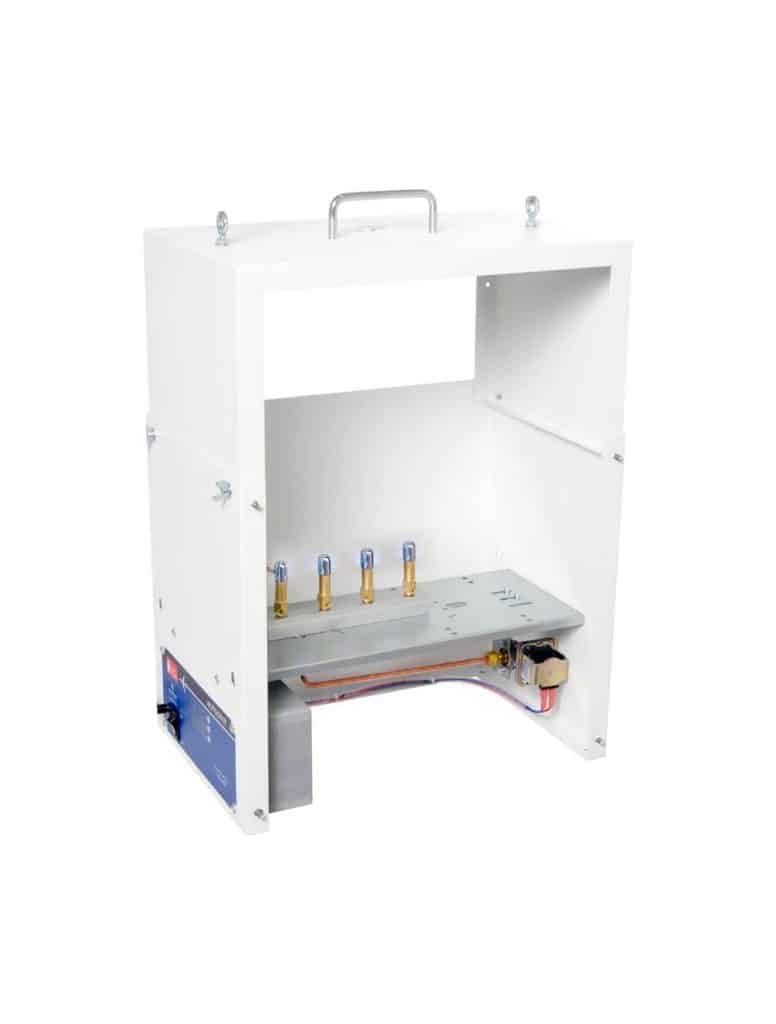
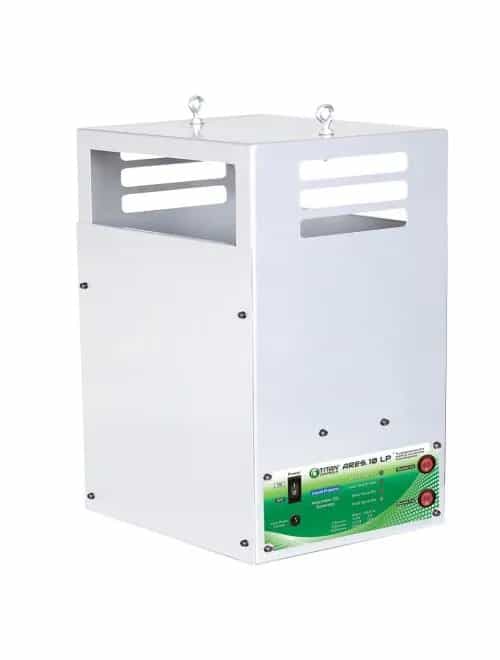
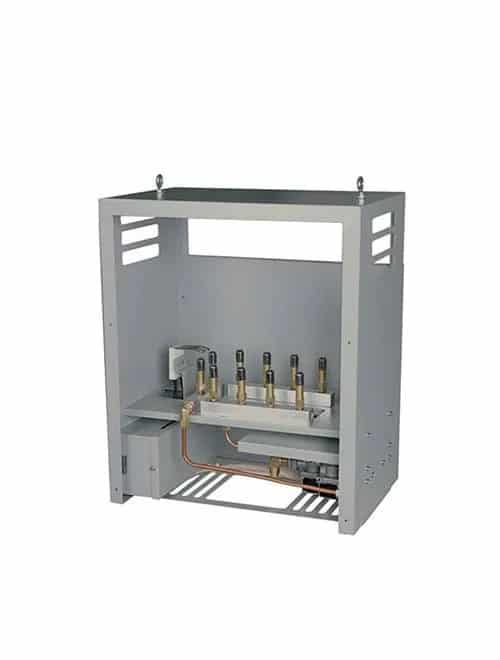
Shop All Grow Room CO2 Generators/Burners
CO2 Controllers
A CO2 controller automatically monitors and controls the CO2 levels, so you don’t have to worry about supplying too much CO2 to your plants.
CO2 controllers are beneficial in hydroponics because they do the following:
- Monitor and maintain CO2 levels in real time
- Alert if CO2 is not distributed evenly
- Adjust CO2 levels to user’s preferences
- Automate the process of adding CO2 to grow rooms
To ensure CO2 is distributed evenly throughout the grow room, you must have proper airflow using fans and ventilation. This grow room CO2 system sends the controller information about your grow room’s CO2 levels. It then determines what to do next about the CO2 levels in the air — either stopping the supply, slowing it down, or sending more if needed.
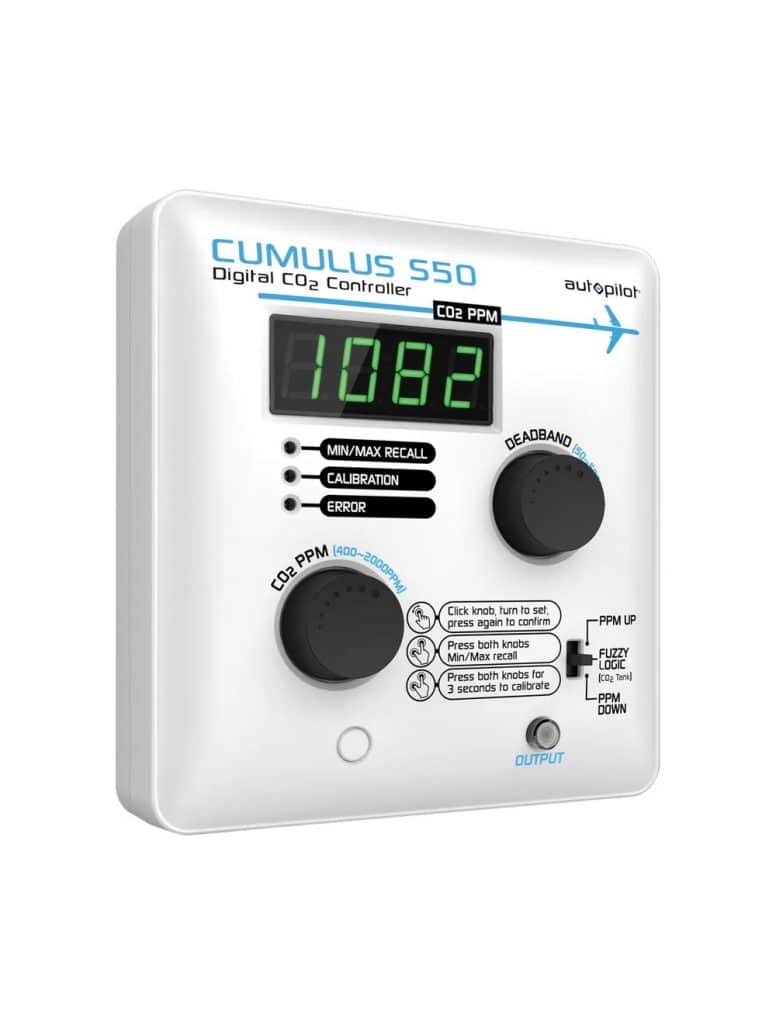
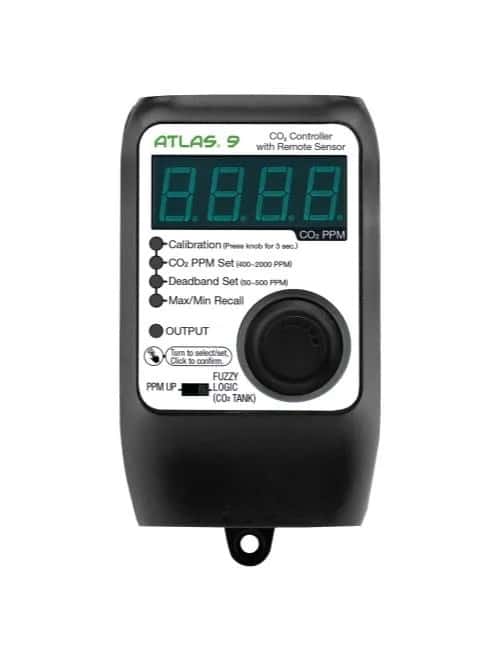

Shop All Grow Room CO2 Controllers
Shop CO2 Equipment for Hydroponics Today
CO2 for grow rooms directly affects yield and growth rate and using it in your hydroponic system is another way to fine-tune your growing process.
Ready to get started shopping for CO2 equipment? We’ve got everything you need to get started.
Shop our selection of CO2 devices today or call our GrowPro team for help choosing the best CO2 setup for your grow room today at (800) 935-8420!



